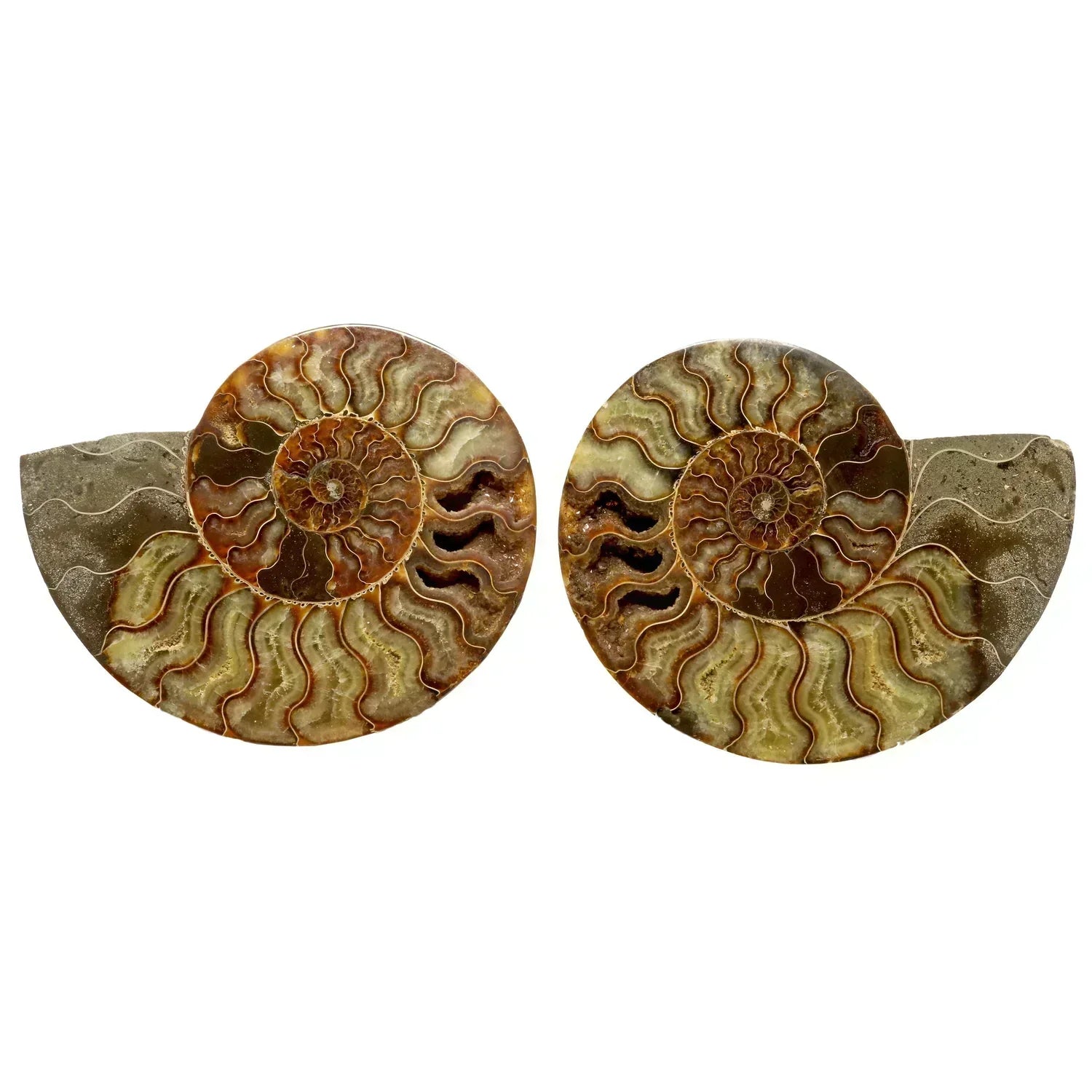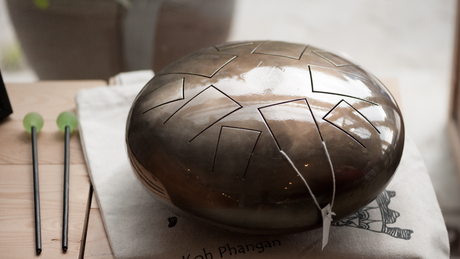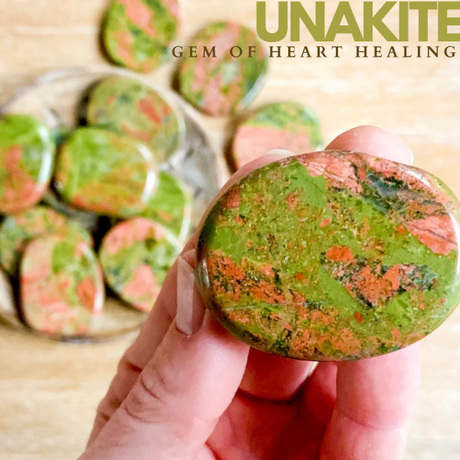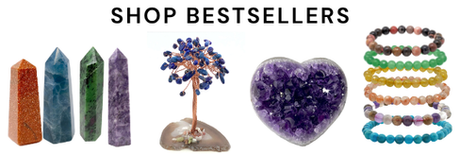Sacred geometry isn’t just a spiritual or mathematical concept—it’s something you can observe all around you. Nature, architecture, and even the human body echo these timeless patterns. In this post, we’ll explore 10 remarkable examples that show sacred geometry in action.
Whether you’ve just been introduced to the concept or deep into your journey, these examples will deepen your understanding and appreciation for the beauty of sacred geometry.
10 Examples of Sacred Geometry In Real Life
Ammonite Shells
An ammonite's shell grew in a logarithmic spiral that reflects the Golden Ratio, a number that appears throughout nature and design. This spiral embodies growth, harmony, and the unfolding of life.
The golden ratio and sacred geometry are intertwined concepts that explore mathematical and geometric relationships found in nature and art, often associated with beauty, balance and harmony.
The golden ratio, approximately 1.618, is a mathematical number found in the proportions of many natural objects and is often represented by the Greek letter phi (Φ).

Flowers And Plants – The Flower Of Life
Look closely at sunflowers, roses (or dahlias, like the one below), and pinecones. Many follow Fibonacci sequences and radial symmetry, echoing the structure of the Flower of Life.
The Fibonacci sequence, where each number is the sum of the two preceding ones (e.g., 1, 1, 2, 3, 5, 8...), is deeply connected to sacred geometry, particularly through its relationship with the Golden Ratio. As the sequence progresses, the ratio of consecutive Fibonacci numbers (e.g., 8/5, 13/8) approaches the Golden Ratio of 1.618.

Snowflakes – Hexagonal Perfection
Every snowflake is unique, but each one features six-fold symmetry—echoing the sacred hexagon found in the Seed of Life and other geometric forms. The precise angles and proportions within a snowflake are based on the properties of ice crystals and water molecules, demonstrating a connection between mathematics and nature.

Ancient Temples And Cathedrals
From the Parthenon to Chartres Cathedral, sacred geometry was used to design buildings with perfect proportions, believed to amplify spiritual energy.
These designs are thought to connect the earthly realm with the divine through geometric precision and symbolic meaning.

The Great Pyramid Of Giza
Built using proportions linked to Pi (π) and Phi (the Golden Ratio), the pyramid's angles and base dimensions encode mathematical constants.
While Pi is a fundamental mathematical constant related to circles, it's not typically considered a core element of sacred geometry in the same way as shapes like the circle, square or Fibonacci spiral.
However, Pi's presence in the geometry of circles and natural patterns, like spirals and waves, leads some to explore its symbolic and spiritual significance within a broader context of sacred geometry.

DNA Helix – Hidden Spiral Code
The double helix structure of DNA mirrors spiral and ratio patterns found in sacred geometry, suggesting a deep harmony within life’s blueprint. DNA's geometric properties and the presence of the Golden Ratio in its measurements, are scientifically observed and described.

Human Proportions – Vitruvian Man
Leonardo da Vinci’s Vitruvian Man illustrates how sacred geometry applies to the human body, with ideal proportions based on geometric ratios. Through its exploration of human proportions and their relationship to geometric forms like the circle and square, the illustration reflects the Renaissance belief that the human body is a microcosm of the universe, aligning with the idea of universal order and harmony found in sacred geometry.

Crystal Structures
Crystals, by their nature, form specific geometric shapes due to the way atoms arrange themselves during their formation. Many natural crystals grow in cubic, hexagonal, or trigonal forms—making them physical manifestations of sacred geometry.

Crop Circles & Modern Art
From mysterious crop circles to works by artists like M.C. Escher, sacred geometry continues to inspire awe and exploration. Crop circles often incorporate geometric patterns and shapes that are also found in sacred geometry systems, including circles, lines, and other shapes that are believed to hold symbolic meaning.
While M.C. Escher's art frequently explores geometric principles and patterns, it's not typically categorized as "sacred geometry." Escher's focus was on mathematical concepts, impossible constructions, and tessellations, often inspired by nature and architecture, rather than on the spiritual or symbolic interpretations associated with sacred geometry. Regardless, it's interesting to see geometric patterns at work in his complex, repeating illustrations.


Crystal & Mineral Decor And Jewelry
Home decor and gemstone jewelry that incorporate sacred geometry symbols can bring sacred geometry (sometimes called holy geometry) into everyday moments, reminding you of the interconnected of life.
Studies suggest that spaces designed with sacred geometry can foster a sense of tranquility and inspiration, positively impacting mental well-being. It can be used as a mindfulness tool to create sacred space, harmonize energy, and facilitate healing. By understanding and incorporating sacred geometry, individuals may find a deeper connection to themselves, nature, and the universe.

Shop Sacred Geometry Decor & Jewelry
Learn More About Sacred Geometry
Curious how these patterns influence your daily life?
In our email series, get a free printable download featuring sacred geometry shapes and even more examples and ways to use sacred geometry in your own space.
Visit Arizona's Premier Crystal Shop
Experience the energy of Sacred Geometry items in person at our 10,000 sq ft Cave Creek showroom, voted Best Of The Valley 10 years in a row! Our crystal experts will help you find the perfect specimen for your needs.
[Get Directions] [Call With Questions] [Shop Sacred Geometry Online]
Frequently Asked Questions About Sacred Geometry












